- Administrator
- Albums and Singles
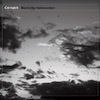 Over their career, Corrupted have been taking a slow (naturally) shift away from their initial starting point: the sludgy assault of the early releases has been replaced with something more akin to modern composition or ambient music. As such, Garten der Unbewusstheit is a logical progression for them as it combines the extreme heaviness of their old recordings with an almost gossamer thin presence. I have always associated their work with the darkness and the atrocities that appear on their album covers and on this album they distil all that hate in one clean swoop into a powerful, positive gesture without losing one shred of their music's emotional effect.
Over their career, Corrupted have been taking a slow (naturally) shift away from their initial starting point: the sludgy assault of the early releases has been replaced with something more akin to modern composition or ambient music. As such, Garten der Unbewusstheit is a logical progression for them as it combines the extreme heaviness of their old recordings with an almost gossamer thin presence. I have always associated their work with the darkness and the atrocities that appear on their album covers and on this album they distil all that hate in one clean swoop into a powerful, positive gesture without losing one shred of their music's emotional effect.
 
The three pieces that make up Garten der Unbewusstheit are less individual pieces than they are movements in what is nearly a symphony. "Garten" builds up from an almost silence as a stark guitar line slowly develops the motif around which the album is centred. The music sounds like Earth’s Hex album if it was re-arranged by Henryk Górecki. There is a sorrow, a melancholy that runs through this piece and indeed the entire album. However, unlike the bleakness of Corrupted’s older works, there is a feeling of hope running through each section. This hopefulness becomes almost a physical entity as the heavy guitars kick in; it feels like the group have scooped me up and delivered me to a god.
Like the aforementioned Earth album, Garten der Unbewusstheit is not just based on an interplay of quiet/loud dynamics. Corrupted use timing in a way that secures the listener in front of the speakers like a set of manacles. Notes are left to hang for what feels like an eternity before the next wave of sound knocks the disturbed air back down. Relying on timing and expression, the music is forceful even when the group’s focus is upon the delicate sound of a classical guitar as evidenced on the instrumental "Against the Dark Days," which bridges the two major pieces of the album.
The performance of a group as a whole is never less than intense and impressively, as epic and evocative as the music gets, Hevi’s vocals manage to chart the same depths and channel the same power as the other elements of the work. Sadly this was his last recording with the group before he left music earlier this year to dedicate his life to cosplay. Whether Corrupted do as well with his replacement, Taiki, remains to be seen but as a swansong for Hevi, it would be hard to beat this.
On the album’s closer, "Gekkou no Daichi," the band come together for one last, long push towards infinity. Slowly, they return to the same clusters of notes that opened the album before igniting the fuse and lifting off into the stratosphere. At its peak, the piece explodes into a cathartic, uplifting and decimating inferno. While I know a lot of people seem to prefer the old Corrupted to their current (or at least most recent) incarnation, I do not know how based on the sheer vastness and passion of pieces and indeed albums like this. The final minutes take all the pessimism, dejection and moral extremity that they have explored in their career and convert it all into one final hopeful thrust for a blissful enlightenment; a state of nirvana or satori.
I have listened to Garten der Unbewusstheit at least a dozen times in the last few weeks and it seems to only increase in its influence. This is an astounding album beyond any simple notion of "Is it good?" or "Is it heavy?" No, it is an emotionally cleansing experience.
samples:
 
Read More
 Christian Fennesz's latest release is a succinct, beautiful burst of vibrant music. The way Fennesz walks the line between experimental electronics and pop without really falling into either category has always intrigued me and he rarely disappoints. This EP is no exception as the colours and feelings of classic Fennesz albums like Endless Summer and Venice are evoked yet this sounds little like either album.
Christian Fennesz's latest release is a succinct, beautiful burst of vibrant music. The way Fennesz walks the line between experimental electronics and pop without really falling into either category has always intrigued me and he rarely disappoints. This EP is no exception as the colours and feelings of classic Fennesz albums like Endless Summer and Venice are evoked yet this sounds little like either album.
- Administrator
- Albums and Singles
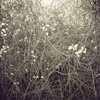
This collaboration between Locrian's Steven Hess and composer/field recordist Christopher McFall is sound art at its most desolate and decayed.  It's a strangely subdued and subtle album, with long non-musical stretches and very rare melodic interludes.  That doesn't make for the most immediately gratifying listen, but it is most definitely by design.  In its own way, this is blacker and more misanthropic than black metal, evoking the ruined and smoldering aftermath rather than the fury.
According to Greek mythology, King Minos was once the victim of a curse that caused him to ejaculate spiders, scorpions, and millipedes, which was exceedingly unpleasant for both him and his romantic interests.  Eventually, he found someone (Procris of Athens) that was able to cure him of his embarrassing affliction and was so grateful that he gave her Laelaps, a hound that never failed to catch his prey.  Curiously, however, Laelaps had a rival: the Teumessian fox, which could never be caught.  Zeus found the whole thing very tedious and turned them both to stone, but Hess and McFall feel differently: that paradox is the central metaphor for The Inescapable Fox, which attempts to create a similar struggle between light and dark.  I think darkness wins pretty decisively here, but the rare glimpses of light are enjoyable and unpredictable enough to keep things interesting.
The bulk of these five untitled pieces is comprised of field recordings, which gives the album an enigmatic and surreal narrative arc of sorts (or at least the illusion of one).  Medium also plays a very important role here, as both McFall and Hess are enthusiastic proponents of analog/tape recording.  In fact, this collaboration actually took shape in very archaic fashion, as the two musicians traded tapes through the mail.  The choice of media had an even deeper impact than that, however, as McFall often ravages his tapes with hydrolysis before recording, which is largely responsible for the murky and blackened atmosphere here.  Nothing sounds natural or completely recognizable–everything seems ruined, slowed down, or reversed in some way.  The Inescapable Fox is a slow and lonely drift though ominous drones and throbs, humming and roaring machinery, tape hiss, and sinisterly re-purposed animals and dripping water.  It makes for an unsettling and disorientingly amorphous listening experience.
Still, while I wholeheartedly admire the process, guts, and vision that went into this album, I think it leans a bit too heavily on being sparse and shadowy: a bit more actual "music" or structure would make it significantly more compelling.  That doesn't seem to be an artistic failing though, as McFall's very effective and perfectly placed blossoms of twinkling piano indicate that the duo were in complete control of what they were doing at all times.  I suspect that they deliberately avoided anything at all that would lump this album in with contemporary ambient or drone and–if that was the case–I'd say they succeeded admirably.  I am probably not ready to fully embrace sound art this spare, abstract, and ravaged yet, but I may very well catch up someday.
Samples:
 
Read More
- Administrator
- Albums and Singles
 This is the second installment of Nate Wooley's wonderfully uncategorizable improvisation project based upon a fixed backdrop of abstract tape recordings.  Notably, it sounds radically different than the skittering and nightmarish first album (where Wooley was joined by Paul Lytton and David Grubbs) and continues to betray no hint of Wooley's background as a jazz trumpeter.  This is improvised music at its most difficult and listener-unfriendly, alternating between queasily dissonant droning and explosive catharsis.  I like it, but it is very much pure, uncompromising art without any nod to accessibility.
This is the second installment of Nate Wooley's wonderfully uncategorizable improvisation project based upon a fixed backdrop of abstract tape recordings.  Notably, it sounds radically different than the skittering and nightmarish first album (where Wooley was joined by Paul Lytton and David Grubbs) and continues to betray no hint of Wooley's background as a jazz trumpeter.  This is improvised music at its most difficult and listener-unfriendly, alternating between queasily dissonant droning and explosive catharsis.  I like it, but it is very much pure, uncompromising art without any nod to accessibility.
This performance, recorded in 2009, is a confounding and expectation-subverting one in many ways.  Even its very title initially puzzled me, as it unambiguously references Thomas Merton's autobiographical account of his spiritual journey towards becoming a Trappist monk.  There is nothing about this piece (or its predecessor) that says "quest for inner peace" or "religious ecstasy"– quite the contrary, in fact.  Instead, the mood is rather seething, haunted, and disturbed, as Wooley's true inspiration is a bit less obvious: the honesty, fear, and struggle of Merton's actual life.  In retrospect, that seems appropriate, as Nate avoids obviousness in every possible respect here (to an almost pathological degree).
The most significant idiosyncrasies come from Wooley's compositional structure and trumpet playing.  For one, Wooley doesn't just play the trumpet in an unusual way here, he plays it in an entirely unrecognizable way.  He manages, as near as I can tell, to avoid playing a single note in the traditional sense for the piece's entire 42-minute duration.  Instead, he uses contact mics to amplify his breathing and valve manipulation and to create feedback.  Also, the piece's backbone–the tapes–seem to be cut from the same cloth, which seems like a very bizarre and minimal structure to repeatedly base a lengthy performance upon (lots of hissing, scrape-like sounds, and understated hums).  It is nearly impossible to tell what is live and what is prerecorded.  It works, mind you, but it is difficult for me to understand the mental process behind it, though I certainly admire its daring.
Given that he is the only one playing a conventionally melodic instrument, C. Spencer Yeh's violin seems to drive the piece by default.  At first, he restrains himself to long droning notes that harmonize uncomfortably with Wooley's drifting feedback, but the piece gradually escalates into something resembling a marauding flock of inebriated seagulls backed by Chris Corsano's somewhat muted drum flurries. The piece seems to truly catch fire around the halfway mark, as Yeh's seagull attack is gradually bolstered by layers of low tormented moans, vicious bow scrapes, shrill air raid siren swoops,  feedback squalls, and an increasingly frenzied and cymbal-heavy Corsano.  There is no one better to have around for roiling, clattering cacophony than Chris Corsano.
Gradually, all the chaos subsides and the piece ends with drifting, uncomfortably harmonized drones and lazily repeating feedback buzz and hiss (but not before one spectacular and unexpected blast of stuttering, spacey sounding feedback and cavernous breathing noises).  It makes a fine denouement to the prolonged and visceral white-hot climax that preceded it.  Of course, the piece is not without some notable flaws (the first half drags a bit, it is markedly less compelling without headphones and focused listening, etc.), but they are very easy to forget once the trio hits their full momentum.  This definitely required a lot of patience, attention, and tolerance for dissonant harmony to fully grasp and appreciate (more than the 2009 version, I think), but it was ultimately well-worth it.  Wooley has birthed something unique and impressive.
Samples:
 
Read More
- Administrator
- Albums and Singles

Xela and I got off to an unfairly bad start, as I was first exposed to John Twells through his anomalous black metal opus (The Illuminated) in 2008 and decided that his work just wasn't for me.  Curiously, that very album began the trilogy that this album finishes, but the only real trait that the two albums share is a devotion to all things bleak, murky, and ominous, this time manifested in beautifully forlorn, slow-motion drone.  That evolution is a welcome one.  In fact, the first half of this album is easily one of the best pieces that I have heard all year.
Having already ambitiously tackled nautical horror with 2006's The Dead Sea, it was only natural that Twells would eventually decide to tackle horror on a much deeper and metaphysical level.  He certainly did not shy away from the challenge, as this trilogy is very Milton/Dante-esque in both content and scope, with the emphasis placed quite squarely on the infernal side of life (and the afterlife).
As befits a fascination with the fall of man and the torments of hell, Twells' recent sound has been a rather scorched, gnarled, and corroded one, which is both a blessing and curse.  That hissing murkiness is very effective at conveying an atmosphere of  vague dread and hinted-at nightmarishness, but it also has a tendency to obscure the content or even to become the focus itself.  It is hard to keep a 20-minute piece compelling on atmosphere alone, but John has recently become very adept at combining his textural genius with similarly inspired composition and melody.  The Sublime begins exactly where The Divine's stunning "Of The Light And Of The Stars" left off, burying heavenly drones and swells beneath a patina of rot and decay in the opening "Lust & Paradise."  The effect is both achingly beautiful and crushingly sad.
"Lust & Paradise" is definitely the stronger of the two pieces, due to its steady throb, spectral melody, and slow-burning accumulation of power.  The closing "Eve's Riposte" has some inspired moments too though, especially the simple melancholy melody lurking beneath all the mist and rumble.  It would actually be the perfect languid come-down for the entire trilogy if it wasn't for for a monotonous and increasingly invasive major chord swell that consumes most of its second half.  I was initially horrified that Twells' was ending such an audaciously ugly and dark-hearted undertaking on an uplifting note, but some discordant grinding and buzzing mercifully arrived at the very end to plunge everything into discordance and hopelessness once more.  That late album derailment aside, this remains a remarkable effort: few albums can boast an entire side of absolute perfection like "Lust & Paradise."
(Note: The Sublime was originally issued on cassette by Digitalis in 2010 with extremely cool cover art, but that version is long unavailable)
Samples:
 
 
Read More
- Administrator
- Albums and Singles
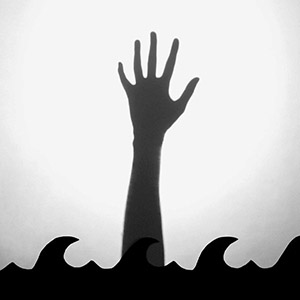 Concluding a trilogy of releases that began with 2008's Indications of Nigredo and 2010's Order4, Closure... is a dense, operatic work of noise and harsh electronics. Tied together as an album and an overarching narrative, it is a bleak and grating disc that conveys violence throughout. It is a challenging and complex work, but a multifaceted one that takes multiple playings to deconstruct and fully appreciate.
Concluding a trilogy of releases that began with 2008's Indications of Nigredo and 2010's Order4, Closure... is a dense, operatic work of noise and harsh electronics. Tied together as an album and an overarching narrative, it is a bleak and grating disc that conveys violence throughout. It is a challenging and complex work, but a multifaceted one that takes multiple playings to deconstruct and fully appreciate.
IRM—the trio of vocalist Martin Bladh, Erik Jarl, and Mikael Oretoft—take cues from a multitude of difficult genres, resulting in nine pieces that never have the band relenting in darkness, either through overt force or insinuated maliciousness.About half of the songs that make up the album are blunt, confrontational outbursts of noise."Closure I" is all massive percussion and shrill squeals of electronics.Bladh's vocals appear nearly indecipherable here and throughout the remainder of the album in a similar way:buried in a pool of flanging and filtering that give his voice a sinister, otherworldly quality.Jerky vocals and abusive rhythms abound on "Closure IV" as well, having less of a distorted, and more of a militant industrial sound to it.
Without the percussion, "Closure II" might not be as immediately intense, but the buzzing and aggressive electronics act as a forceful accompaniment to the vocals."Closure VII" is another piece where the ensemble channels aggression without the rhythmic additions.Instead, it is Bladh's vocals doing battle with layers of synth distortion, building and compounding to an explosive wall of noise climax that is not far removed from Macronympha’s best work.
The trio dial back the dissonance for other parts of the album, resulting in more pieces that lurk rather than assault.For most of its duration, "Closure III" is a calmer, quieter piece of music.Ticking clocks, spoken word and what sounds like sheets of rain conjure a mood, albeit a gloomy one.Similarly, much of "Closure V" stays on the ambient end of the spectrum, with scraping cello strings by Jo Quail buried under buzzing electronics and a dark, sinister bass throb.Spoken word and abrasive sonics enhance the bleakness of "Closure VIII," with a more conventional and calmer bass guitar melody that underscores it.
There is clearly an central narrative to Closure…, but the heavily processed vocals make it anything but clear.There is the recurring motif of both performance and execution, and the intersection of both, which is bolstered by the shadowplay images presented throughout the accompanying booklet.Even divorced from its thematic content, however, Closure… is a haunting and harrowing work of harsh electronics that carries just as much intensity in its music as it does the words.
samples:
 
Read More
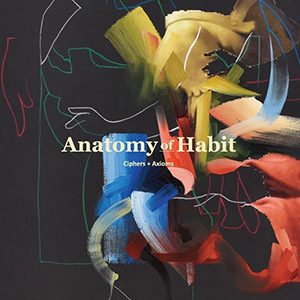 Following up their debut LP and EP, Chicago's post-everything supergroup Anatomy of Habit (featuring members of Bloodyminded, Tortoise, and Indian, amongst many other projects) continue their penchant for dramatic, expansive rock-tinged music. For their Relapse debut, they provide two lengthy, side-long pieces that distill everything that was great about their early releases into a cohesive, rich album that stays faithful to their previous work, while adding an extra layer of polish.
Following up their debut LP and EP, Chicago's post-everything supergroup Anatomy of Habit (featuring members of Bloodyminded, Tortoise, and Indian, amongst many other projects) continue their penchant for dramatic, expansive rock-tinged music. For their Relapse debut, they provide two lengthy, side-long pieces that distill everything that was great about their early releases into a cohesive, rich album that stays faithful to their previous work, while adding an extra layer of polish.
- Administrator
- Albums and Singles
 Following up their debut LP and EP, Chicago’s post-everything supergroup Anatomy of Habit (featuring members of Bloodyminded, Tortoise, and Indian, amongst many other projects) continue their penchant for dramatic, expansive rock-tinged music. For their Relapse debut, they provide two lengthy, side-long pieces that distill everything that was great about their early releases into a cohesive, rich album that stays faithful to their previous work, while adding an extra layer of polish.
Following up their debut LP and EP, Chicago’s post-everything supergroup Anatomy of Habit (featuring members of Bloodyminded, Tortoise, and Indian, amongst many other projects) continue their penchant for dramatic, expansive rock-tinged music. For their Relapse debut, they provide two lengthy, side-long pieces that distill everything that was great about their early releases into a cohesive, rich album that stays faithful to their previous work, while adding an extra layer of polish.
From the opening moments of "Radiate then Recede", AoH's influences are not hard to place.The pounding drums, subterranean bass and caustic, drilling guitar bear a clear early Swans influence, but with a bit more restraint and less overt violence.The production adds a lot to this differentiation, with the use of reverb and processing bringing a hint of The Cure and Joy Division to their sound.Influences, yes, but they do so without directly aping any of those projects directly, retaining their own distinct style.
At over 20 minutes "Radiate And Recede" works more like a suite than a single song, with the band working through various configurations of the aforementioned sounds.Sometimes sludgy and shambling, other times leaning into chugging metal riffs, it never stops moving nor becomes stagnant.Vocalist Mark Solotroff, the de facto leader of this ensemble, delivers vocals that are the polar opposite of what he is known for from Intrinsic Action or Bloodyminded.Rather than manic screams or shouts, he is detached, calm and clinical.Amongst the dirge and darkness constructed from distorted bass and guitar melodies, he clearly reads off scientific terms with an uncomfortable detachment.
On the other half of the record, "Then Window," the group retains the mood but changes the template a bit.Early on, guitar noise dissolves into militant drumming and wobbling bass rattles.The piece transitions from a looser opening into a more tautly structured passage of almost 1970s classic heavy metal, juxtaposing the differing styles.It is depressive and muddy, with an almost shuffling drum groove driving it.
By the middle it becomes a massive ambient expansive, with Solotroff hypnotically repeating the title of the album like some sinister documentary narrator, with the band throwing out expansive, fuzzy noise paired with the guitar melody present since the beginning of the piece.Compared to "Radiate then Recede" it is clearly a more static, frozen piece, but one that captivates all the same.
There are not gigantic strides made stylistically between the first two AoH releases and Ciphers + Axioms, but instead there is a greater cementing of their identity, as well as a more fully realized sound.Unlike most supergroups where each artist is pushing their "thing" harder than the rest, everyone here fits perfectly with one another.They might sound nothing like each other, but parallels are there between AoH and Kevin Martin's God in that respect.A gathering of musicians who mesh seamlessly together, each acting like a force multiplier to the other to result in a dense, heavy, yet thoroughly enthralling album.
samples:
 
Read More
- Administrator
- Albums and Singles
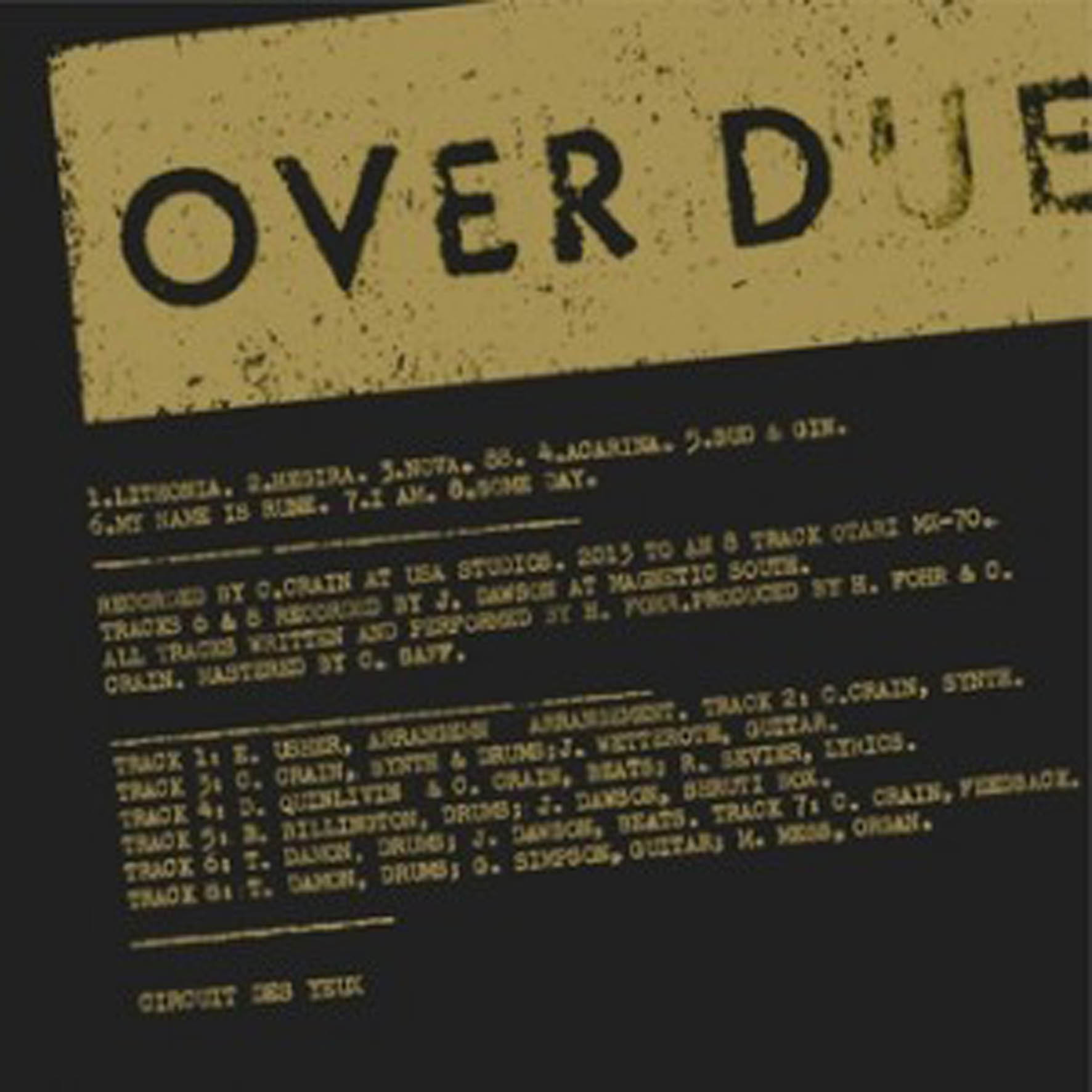 After three weeks of listening to Haley Fohr's fourth (or fifth) album, I still have absolutely no idea what to make of it, which is probably a good thing (unless it is not).  In any case, Overdue finds Fohr further distancing herself from her abstract experimental past and embracing an equally strange present (and future?) that resembles some kind of unholy mixture of Zola Jesus, Xiu Xiu, Teenage Jesus and the Jerks, Codeine, and an exorcism.  As cool as that admittedly sounds, it does not resonate nearly as much with me as Fohr's earlier work.  The sheer force and conviction on display is still quite impressive though.
After three weeks of listening to Haley Fohr's fourth (or fifth) album, I still have absolutely no idea what to make of it, which is probably a good thing (unless it is not).  In any case, Overdue finds Fohr further distancing herself from her abstract experimental past and embracing an equally strange present (and future?) that resembles some kind of unholy mixture of Zola Jesus, Xiu Xiu, Teenage Jesus and the Jerks, Codeine, and an exorcism.  As cool as that admittedly sounds, it does not resonate nearly as much with me as Fohr's earlier work.  The sheer force and conviction on display is still quite impressive though.
Overdue opens in both strong and deceptive fashion, as "Lithonia" is a very structured and melodic piece built upon a beautiful string arrangement that is impossible not to compare to Zola Jesus' collaboration with Jim Thirlwell (Versions).  While it is arguably the album's strongest song, Fohr never returns to that aesthetic ever again.  In fact, there is no clear stylistic thread to the album at all–the only real constant is Haley's deep, powerful voice and perhaps a tendency towards unadorned, stripped-down songcraft.  That makes for a very schizophrenic listening experience, as it almost feels like Fohr is rapidly cycling through a different number of guises hoping to find one that fits.  If this were Circuit Des Yeux's first album, I would chalk that up to Fohr's youthful inability to properly harness her incredible intensity, but she has been doing this long enough that it can only be a bizarre and deliberate artistic choice instead.
Overdue's most frequently explored territory is a kind of melancholy-to-outright-gloomy acoustic folk best represented by pieces like "My Name is Rune" and "Hegira."  In keeping with the disorienting theme of the album though, even otherwise straightforward pieces gradually become musically idiosyncratic (which is appropriate, given the uniqueness of Fohr's vocals).  "Rune" has the most subtle twist, as the minor key arpeggios are eventually joined by a warm and gently pulsing organ chord.  "Hegira," on the other hand, features some unexpected electric guitar snarl and lush, goth-inspired synthesizer chords, while the otherwise pleasant and sprightly instrumental "Bud & Gin" is gradually overwhelmed by pounding drums and wordless warbling before morphing into a backwards coda.
Notably, the most striking song on the entire album is also the simplest: "I Am."  In fact, it almost sounds like it could have been made up and performed on the spot, aside from the multiple guitar tracks: it is basically just a few grime-encrusted chords, a little vocal distortion, and an almost-possessed-sounding refrain of "I want out I want out I want out I want out."  Again, I am reminded of other artists (Jarboe and Lydia Lunch at their most hostile and unhinged), but there is nothing actually derivative occurring–this is simply how direct, blunt, wild-eyed rage sounds.
The remainder of the album calls to mind early '90s slow-core like the aforementioned Codeine: plodding, slow-motion beats and distorted minor key guitar chords, the sole  twist being that Fohr's unique vocals remain at their usual near-operatic intensity.  One song ("Acarina") warps that formula quite a bit further though, sounding like an unplugged Codeine accompanied by a gibbering, barking insane person and some kind of ritualistic chanting.  I am not sure that that is necessarily a good thing, but it is certainly a one-of-a-kind thing, which I suppose is its own reward.
Ultimately, I could not connect with most of Overdue's songs, but it still feels like a success artistically, even if it might be a bit of a transitional one.  Fohr is taking a difficult route with her work, gradually stripping away all of her previous electronics and artifice to create something raw, honest, and direct.  That might not be particularly easy on my ears, but it is not meant to be and the intent is certainly laudable (even though I love electronics and artifice).  Great art tends to be uncomfortable and this is flawed great art: even though I wish this album had a more coherent focus and was a bit less oppressively dark, I cannot help but admire the sheer force and otherness of Haley's personality.  In fact, I suspect that the detached medium of an album is probably a hopelessly muted way to experience Circuit Des Yeux, as it is easy to imagine these songs being scarily riveting in a live context.
 
Read More
- Administrator
- Albums and Singles

Artist: Various Artists
Title: John Barleycorn Reborn: Rebirth
Catalogue No: CSR150CD
Barcode: 8 2356650632 4
Format: 2 x CD in jewelcase
Genre: Traditional Folk, Dark Folk, Ballads
Shipping: 21st November
Pre-Order 2CD
The double-edged nature of the harvest season can be both a blessing and a burden; a vision of superabundant excess than can’t possibly be consumed before it rots. Our pre-industrial forebears expended considerable time and energy on conserving some of autumn’s bounty against the scarcity of winter… yet somehow, people would survive to till their fields again the following spring. The compilers of the first ‘John Barleycorn Reborn’ compilation, released in 2007, faced a similar embarrassment of riches - a testament both to English folk heritage and the health of the contemporary folk music scene. So here we have the second crop from that original sowing. Originally released for download only, now finally available as a stunning double CD, with every track completely remastered to the highest quality. 33 tracks from the cream of current dark British Folk music.
Tracks:
Disc 1: 1. Magpiety - 'The Rolling Of The Stones' | 2. The Story - 'All Hallow's Eve' | 3. Telling The Bees - 'Wood' | 4. David A Jaycock - 'Bonny Jaycock Turner' | 5. Yealand Redmayne - 'Oh My Boy, My Bonny Boy' | 6. Charlotte Greig And Johan Asherton - 'The Bold Fisherman' | 7. Steve Tyler - 'Tierceron'| 8. The Wendigo - 'The Wendigo' | 9. The Owl Service - 'Wake The Vaulted Echo (Tigon Mix by RAF)' | 10. Far Black Furlong - 'The East Room V' | 11. Xenis Emputae Travelling Band - 'Brightening Dew' | 12. Sedayne - 'Corvus Monedula' | 13. The Straw Bear Band - 'Bear Ghost' | 14. Novemthree - 'Scythe To The Grass' | 15. Paul Newman - 'Lavondyss' | 16. James Reid - 'Kingfisher Blue' | 17. JefvTaon - '(Digging The) Midnight Silver' | 18. Wooden Spoon - 'Children's Soul' | 19. The Big Eyes Family Players - 'A Dream Of Fires'
Disc 2: 1. Sungod - 'Improvisation At Kilpeck, June 2007' | 2. Clive Powell - 'Ca The Horse, Me Marra' | 3. Mac Henderson Of Grand Union Morris - 'Jack In The Green' | 4. Cunnan - 'Seven Sleepers, Seven Sorrows' | 5. Orchis - 'The Silkie' | 6. Twelve Thousand Days - 'Thistles' | 7. Novemthree - 'Harvest Dance' | 8. James Reid - 'Elder' | 9. Mary Jane - 'When I Was In My Prime' | 10. Daughters Of Elvin - 'Ognor Mi Trovo' | 11. Misericordia - 'De Poni Amor A Me' | 12. Venereum Arvum - 'Child 102 (Lily Flower Mix)' | 13. The Anvil - 'John Barleycorn Must Live' | 14. Sunshine Coding - 'The Old Way'
Read More
- Administrator
- Albums and Singles
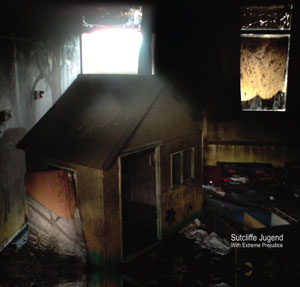
Artist: Sutcliffe Jugend
Title: With Extreme Prejudice
Catalogue No: CSR143CD
Barcode: 8 2356650692 8
Format: CD in jewelcase with slipcase
Genre: Power Electronics / Experimental
Shipping: 21st November
Pre-Order CD
Harsh extreme electronic pioneers Sutcliffe Jugend return with an album of all new material. Three years in the making, and with numerous reworkings, "With Extreme Prejudice" finds Sutcliffe Jugend at the top of their game. Forcing the listener to question their own prejudices and taboos, as modern man struggles to confront and control his inner demons. Musically and lyrically this is SJ's most varied album to date, ranging from harsh electronic onslaughts to a new kind of musical oblivion. Production and sound values are closer to industrial music than ever before, creating a very different feel to their previous filthwork "Pigdaddy". Enter if you dare, the very twisted and real world of Sutcliffe Jugend as they execute With Extreme Prejudice. Includes an 8 page booklet and slipcase.
Tracks: 1. With Extreme Prejudice | 2. Carnage | 3. Beaten | 4. Empathiser | 5. Bound | 6. Lucky | 7. I Have Kissed This Sick, Sick World Goodbye | 8. Death Of A Post Christian Humanist | 9. Oblivion | 10. Fuckrage | 11. Fall Of Utopia
Read More

